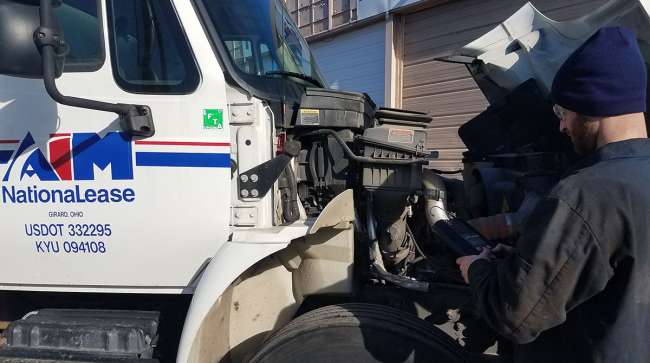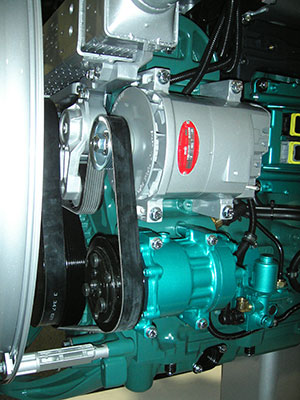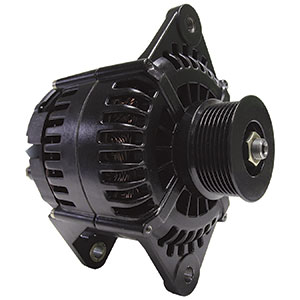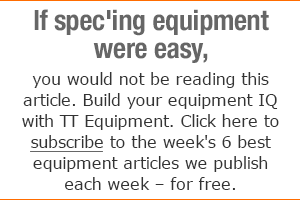Efficient Alternators Help Reduce Fleets’ Fuel Costs, Experts Say

Engineering advancements are producing more efficient alternators for heavy trucks that are helping to reduce fleets’ fuel bills, industry experts said. These improvements include better cooling and additional metal in the windings to reduce internal resistance. Sensing the voltage remotely at the battery also allows charging at a higher voltage, which further increases efficiency.
“One of the most important advantages of the latest alternators to us is they are effective at lower speeds,” said Chris DiSantis, director of training and field technical support at truck-leasing provider Aim NationaLease. Low-speed charging means the company’s customers save fuel because alternators are more efficient when turning more slowly, said DiSantis, who is the chairman of the electrical and instruments study group at American Trucking Associations’ Technology & Maintenance Council.
A truck’s alternator converts power from the engine to direct current to power all the truck’s electrical systems and charge the batteries. Fully charged batteries then provide cold and warm engine starts with minimal risk of a no-start or damage to the starter.

An alternator installed onto a Volvo D16 engine via pad mounting. (John Baxter)
An alternator converts mechanical energy into electricity, said Rob Steele, application engineer with Borg Warner, parent company of Delco Remy.
DiSantis said low-speed charging also helps keep the truck’s batteries fully charged, which prevents breakdowns. Aim NationaLease mostly uses the Delco 40 SI unit, which delivers high amperage at low vehicle speeds, DiSantis said. These 240-amp alternators deliver 165 to 180 amps even when a vehicle is driving at well below highway speeds, he said, adding that they only use remote-sense alternators.
Remote sense enables the alternator’s voltage regulator to measure the voltage at the positive battery terminal rather than at the alternator itself. This allows the alternator to supply full charging voltage to the battery despite the resistance in the positive battery cable. Charging at a higher voltage means the alternator operates more efficiently, and it recharges batteries much faster after a start.
Downspeeding the diesel engine so it turns fewer RPMs at cruise improves alternator efficiency while at the same time promoting efficiency in the engine itself, Steele said. “Part of what changes is the lower bearing speed, which generates less friction.”

Prestolite Idle-Pro alternator (Prestolite Electric)
Clive Harley, vice president of product engineering at Prestolite Electric, manufacturer of Leece-Neville alternators, said alternator efficiency has risen from a low of 55% many years ago to 65% in the 1980s to 80% today. This improvement has been driven not only by the need to enhance fuel economy due to regulation, but also by the increasing electrical requirements for creature comforts in the cab, Harley said.
Engineers have been able to calculate that an ideal alternator would produce 741 watts if driven by a 1 horsepower engine. They can drive an alternator at a given power level and then measure its power output to determine efficiency. For example, if they found a certain alternator driven by a 1 hp engine produced 370.5 watts, just half the ideal output, they would know it was 50% efficient.
“The efficiency of the alternator is variable, and it depends in part on how fast it is turning,” Harley said. “Alternators are like engines in that they have a ‘sweet spot.’ ”
“Ideally, the alternator will be in its sweet spot in terms of how fast it is turning when the engine is in its sweet spot,” Harley said, noting this is why alternators have been redesigned to produce more power at lower RPMs.
Precision engineering has produced internal design changes that have reduced electrical resistance inside the machine so it’s easier for the power to flow through it, Harley and Steele said.
One change involves a part called the stator, a large, circular assembly where the alternator actually produces the current, they said. The stator has slots that hold tightly wound coils of wire. Both said that their stators now use wire with a square cross-section instead of round wires. This eliminates air gaps so more copper can be wound into the same space. More copper means current flows with less resistance and, in turn, higher alternator efficiency.
A second change is better cooling. Many of today’s alternators have more powerful cooling fans that often reside in the center of the unit instead of the back. This means air comes in from both front and back and has a shorter path through the unit, exiting at the center. Better cooling aids alternator longevity, and the belts run cooler with the better alternator cooling, which extends their life considerably, DiSantis said.
Mike Hasinec, vice president of maintenance support at Penske Truck Leasing Co., sees late-model alternators that the company specs from Delco Remy as more efficient because of the increase in copper in the stators and other design changes. Penske Truck Leasing is more interested in cost per mile than the initial purchase cost, he said.
“We’re going to that business model more and more,” Hasinec said, noting the company’s willingness to purchase premium models that can save fuel. While it hasn’t proven practical to measure the difference in fuel consumption that a more efficient alternator provides, there’s been a reduction in fuel consumption starting with 2010 vehicles that amounts to nearly 45% in total, Hasinec said.
“It’s the sum of all the changes, from better aerodynamics to low-rolling-resistance tires, lower viscosity engine oils and other changes,” Hasinec said.
A single fleet might have difficulty quantifying the fuel savings, DWS Fleet Management Services CEO Darry Stuart said. He believes the actual effect of a more efficient alternator would be “hard to measure,” but it would be likely to save some fuel.
The manufacturers shared some data, however. A white paper from Delco Remy compares two alternators each producing the same 84 amps over 500,000 miles in linehaul service. One was 60.5% efficient and cost $4,534 in fuel to operate. The second was 72.6% efficient and cost $3,778 in fuel to operate. The one with the higher level of efficiency saved the fleet $756 in fuel.
Part of the difference in alternator efficiency is in the design of the machine itself, but Hasinec added that part of it is due to alternators with remote sense, which don’t undercharge or overcharge.
Remote sensing works better than controlling the voltage at the alternator output because the resistance in the cable that runs from the alternator to the battery will lower the voltage at the positive battery terminal, Purkey’s Electric Consulting President Bruce Purkey said. Measuring the voltage at the battery means more charging voltage, and that speeds up charging considerably.
TMC Executive Director Robert Braswell noted that the higher charging voltage that remote sense provides means higher efficiency. The higher efficiency comes from the fact that the same amount of power is obtained with less current flow or fewer amps when the voltage is higher, he said.
Meanwhile, starters, too, have seen a revolution, although the focus with late-model starters has been on weight savings because fuel usage is not significant.
Rather than the pinion on the end of the starter motor driving the flywheel directly, a gearbox is positioned between the starter’s electric motor and the pinion, multiplying the twisting force the motor provides. The change results in a starter that weighs less and takes up less space because the motor itself can be much smaller.
“These days, under the hood, real estate is very important,” Penske’s Hasinec said. He estimates the weight savings at 15 pounds or more. It’s all part of reducing vehicle weight to save fuel and increase payload.
“Geared starters won’t cost you more, but we’ve moved into a new era,” DWS’ Stuart said. “Many are made offshore, and nobody rebuilds them anymore. In the past, you’d keep the old core and you could rebuild a starter for about $60 and it would just keep going. Today, we just exchange it for a new one.”
Manufacturers tout the lighter weight and smaller size of starters that use gear reduction, but they also appreciate the fact that less copper for the windings is needed, making them cheaper to manufacture, Stuart said.
DiSantis said Aim NationaLease has a number of International brand trucks it purchased recently that use Mitsubishi starters with a soft-start feature as standard equipment. These engage the pinion prior to energizing the unit to protect the gear teeth on the pinion and flywheel. “They have performed very reliably for us,” he said.


